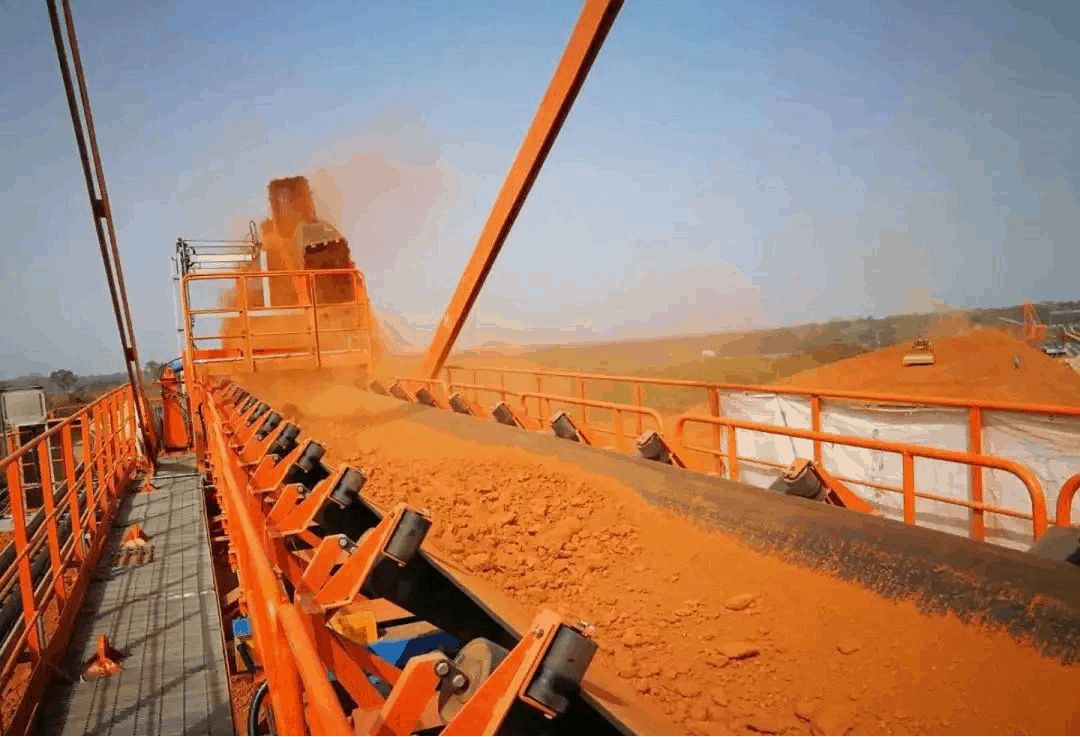
What is Bauxite Beneficiation? What are the Methods of It?
Aluminum is one of the sustainable metals available today. The demand for this metal is increasing rapidly as the metal industry is expanding. The raw material available for processing Aluminum is Bauxite ore.
There are abundant Bauxite ores available worldwide, but only a few have good-quality reserves. Moreover, the quality of the ore varies from region to region. For such reasons, many companies perform Bauxite beneficiation on a large-scale basis.
If you also want to know the various Bauxite beneficiation techniques, consider reading this post.
The Purpose of Bauxite Beneficiation
Bauxite ore consists of various contaminants, including silicon. It contains hydrated aluminum oxide in the form of boehmite, diaspore, and gibbsite with other impurities like iron, silica, titanium, and other minerals.
The presence of such impurities makes the substance unfit for use in applications. The process is mainly practiced for reducing the amount of silica and increasing the quality of aluminum. The process is also useful for iron removal or iron extraction.
Another element in Bauxite ore is silicon, which can lead to the formation of red mud. It can also lead to environmental pollution and damage bauxite processing machines. Hence, to offer manufacturers high-quality aluminum, the process of bauxite beneficiation is practiced.
Methods of Bauxite Beneficiation
Ore Washing
This method is practiced for washing diaspore and gibbsite Bauxite that contain more mud. The substance is washed to get the raw material for alumina production.
It is a double-stage process using cylinder and trough washing for beneficiation. A three-stage washing process is practiced if the ore is difficult to wash. In the three-stage procedure, linear vibrating equipment is also used.
It is a simple yet effective method to provide high-quality aluminum with less silicon. Often, washing is combined with other sorting techniques to enhance product efficiency.
· Magnetic Separation
Barite is beneficiated using magnets on a limited scale. Bauxite is dried using heat for converting it to magnetite. Only then it is used for the magnetic separation technique. The residue is pyrite and hematite, along with other minerals.
· Magnetic Roasting
The magnetic roasting technique uses coal or gas as a reducing agent for reducing iron minerals in Bauxite to strong magnetite. The magnetite is separated to obtain high-grade aluminum and iron concentrate.
In this process, the raw bauxite is crushed to a very fine size. It is then separated by using a magnetic separator to obtain iron concentrated alumina. As a result, you gain fine particles of high quality. But the process is more time-intensive and costly than other procedures.
· Chemical Beneficiation
The production of alumina is also dependent on chemical beneficiation technology, and three techniques are the acid method, electrothermal method, and alkali method.
The electrothermal and acid method is used in the industry, and the alkaline technique is presently the main technique for producing alumina. This technique is divided into the Bayer process, combined Bayer process, and lime sinter procedure.
Bauxite beneficiation techniques are complex, and the process must be chosen according to the characteristics and types.
· Flotation Method
A flotation machine is used to separate Bauxite and separate non-metals like talc and coal fluorite.
A flotation machine features high automatic extent, wear-resistant parts, high separating accuracy, low agent consumption, and simple and low maintenance cost.
· Drum Washer
This process is followed during the mining step to avoid clogging the screening and crushing equipment by the mud-containing Bauxite minerals. It cleans the crude Bauxite and is extensively used in pre-cleaning of the ore.
It cleans all sorts of ores and offers a high washing efficiency of 90%. The process offers low power consumption, low-speed rotation, and low cost. It holds a simple structure and offers large output.
· Electrostatic Separation and Bayer Process
The dry separation process allows Bauxite producers to perform the pre-Bayer process. It offers many benefits, like reduced operating costs of refineries because of the low consumption of caustic soda. It saves energy while refining due to the low volume of non-reactive materials and oxides. The small mass flow leads to less energy to pressurize and heat.
It removes inert oxides and reactive silica, which reduces red mud generation. The process gives you more control over the quality and allows refiners to achieve enhanced impurity rejection.
The improved quality has extended operating life by maximizing recovery and enhancing quarry utilization. The products obtained from the dry electrostatic procedure have no chemicals. Also, it offers a long-term environmental benefit.
Among all the above mentioned procedures, the best way is beneficiation using a powerful and efficient turbo-electrostatic separator. The dry processing with a STET separator provides opportunities to generate value for Bauxite refiners and producers. If you are looking for high-quality Bauxite processing equipment that delivers efficient results, contact Steqtech. Our equipment involves no chemicals or water and provides a consistently smooth process. Give us a call today.
Steqtech
Guest Post – 2 August 2023
Title: What is Bauxite Beneficiation? What are the Methods of It?
Aluminum is one of the sustainable metals available today. The demand for this metal is increasing rapidly as the metal industry is expanding. The raw material available for processing Aluminum is Bauxite ore.
There are abundant Bauxite ores available worldwide, but only a few have good-quality reserves. Moreover, the quality of the ore varies from region to region. For such reasons, many companies perform Bauxite beneficiation on a large-scale basis.
If you also want to know the various Bauxite beneficiation techniques, consider reading this post.
The Purpose of Bauxite Beneficiation
Bauxite ore consists of various contaminants, including silicon. It contains hydrated aluminum oxide in the form of boehmite, diaspore, and gibbsite with other impurities like iron, silica, titanium, and other minerals.
The presence of such impurities makes the substance unfit for use in applications. The process is mainly practiced for reducing the amount of silica and increasing the quality of aluminum. The process is also useful for iron removal or iron extraction.
Another element in Bauxite ore is silicon, which can lead to the formation of red mud. It can also lead to environmental pollution and damage bauxite processing machines. Hence, to offer manufacturers high-quality aluminum, the process of bauxite beneficiation is practiced.
Methods of Bauxite Beneficiation
Ore Washing
This method is practiced for washing diaspore and gibbsite Bauxite that contain more mud. The substance is washed to get the raw material for alumina production.
It is a double-stage process using cylinder and trough washing for beneficiation. A three-stage washing process is practiced if the ore is difficult to wash. In the three-stage procedure, linear vibrating equipment is also used.
It is a simple yet effective method to provide high-quality aluminum with less silicon. Often, washing is combined with other sorting techniques to enhance product efficiency.
· Magnetic Separation
Barite is beneficiated using magnets on a limited scale. Bauxite is dried using heat for converting it to magnetite. Only then it is used for the magnetic separation technique. The residue is pyrite and hematite, along with other minerals.
· Magnetic Roasting
The magnetic roasting technique uses coal or reducing gas as a reducing agent for reducing iron minerals in Bauxite to strong magnetite. The magnetite is separated to obtain high-grade aluminum and iron concentrate.
In this process, the raw bauxite is crushed to a very fine size. It is then separated by using a magnetic separator to obtain iron concentrated alumina. As a result, you gain fine particles of high quality. But the process is more time-intensive and costly than other procedures.
· Chemical Beneficiation
The production of alumina is also dependent on chemical beneficiation technology, and three techniques are the acid method, electrothermal method, and alkali method.
The electrothermal and acid method is used in the industry, and the alkaline technique is presently the main technique for producing alumina. This technique is divided into the Bayer process, combined Bayer process, and lime sinter procedure.
Bauxite beneficiation techniques are complex, and the process must be chosen according to the characteristics and types.
· Flotation Method
A flotation machine is used to separate Bauxite and separate non-metals like talc and coal fluorite.
A flotation machine features high automatic extent, wear-resistant parts, high separating accuracy, low agent consumption, and simple and low maintenance cost.
· Drum Washer
This process is followed during the mining step to avoid clogging the screening and crushing equipment by the mud-containing Bauxite minerals. It cleans the crude Bauxite and is extensively used in pre-cleaning of the ore.
It cleans all sorts of ores and offers a high washing efficiency of 90%. The process offers low power consumption, low-speed rotation, and low cost. It holds a simple structure and offers large output.
· Electrostatic Separation and Bayer Process
The dry separation process allows Bauxite producers to perform the pre-Bayer process. It offers many benefits, like reduced operating costs of refineries because of the low consumption of caustic soda. It saves energy while refining due to the low volume of non-reactive materials and oxides. The small mass flow leads to less energy to pressurize and heat.
It removes inert oxides and reactive silica, which reduces red mud generation. The process gives you more control over the quality and allows refiners to achieve enhanced impurity rejection.
The improved quality has extended operating life by maximizing recovery and enhancing quarry utilization. The products obtained from the dry electrostatic procedure have no chemicals. Also, it offers a long-term environmental benefit.
Among all the abovementioned procedures, the best way is beneficiating using a powerful and efficient turbo-electrostatic separator. The dry processing with a STET separator provides opportunities to generate value for Bauxite refiners and producers. If you are looking for high-quality Bauxite processing equipment that delivers efficient results, contact Steqtech. Our equipment involves no chemicals or water and provides a consistently smooth process. Give us a call today.






